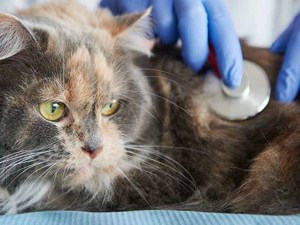Emergencies can happen at any time, so it’s best to be prepared and know what to do if an emergency occurs. Talking with your veterinarian is a crucial part of being informed and prepared to handle emergencies.
Low blood sugar (hypoglycemia)
The most common side effect experienced with insulin therapy is hypoglycemia. Hypoglycemia can be caused by:
● Giving too much insulin.
● Missing or delaying food.
● Change in food, diet, or amount fed.
● Infection or illness.
● Change in the body’s need for insulin.
● Diseases of the adrenal, pituitary, or thyroid glands, or progression of liver or kidney disease.
● Interaction with other drugs (such as steroids).
● Change (increase) in exercise.
Signs of hypoglycemia may occur suddenly and can include:
● Weakness
● Depression
● Behavioral changes
● Muscle twitching
● Vocalization
● Anxiety
● Seizures
● Coma
● Death
See below for a list of other side effects.
What to do
If your pet is conscious, rub a tablespoon of corn syrup on his or her gums. When your pet is able to swallow, feed him or her a usual meal and contact your veterinarian. If your pet is unconscious or having a seizure, this is a medical emergency. Contact your veterinarian right away.
In the meantime, you should immediately treat your pet rather than delay management. Pour a small amount of a sugar solution (e.g., corn syrup) onto your finger and then rub the sugar solution onto your pet’s gums. The sugar is absorbed very quickly and your pet should respond in 1 to 2 minutes. The sugar solution should never be poured directly into your pet’s mouth since there is a risk that the solution will be inhaled into the lungs. Once your pet has responded to the sugar administration and is sitting up, it can be fed a small amount of its regular food. Once the pet has stabilized, it should be transported to your veterinarian for evaluation.
Keeping your pet’s blood sugar stable
Your pet’s diet should be consistent and appropriate.
● A nutritionally complete, dry or canned pet food should be fed in consistent amounts at the same times each day.
● Treats and changes in diet should generally be avoided unless recommended by your veterinarian.
● Your veterinarian will advise you on how much and when to feed your pet based on the response to their insulin treatment.
● Your pet’s exercise/level of play should remain consistent.
● Consult with your veterinarian if you expect a major change in activity.
● Develop a schedule with your veterinarian for regular evaluations of your pet’s diabetes.
Overdosage or missing an injection of insulin
If your pet is given too much insulin, life-threatening hypoglycemia (low blood sugar) can result. Contact your veterinarian immediately. If your veterinarian is not available, seek other veterinary advice at once. Your pet may need to be hospitalized for observation or management. If your pet receives less than the prescribed dose, or if you miss an injection, this may cause a temporary recurrence of signs (such as excessive thirst and urination) but is not life-threatening. Contact your veterinarian as soon as possible for advice on your pet’s next dose. If you cannot reach your veterinarian and your pet is eating and acting normally, give your pet the usual dose at the next regularly scheduled injection time.
For free 24/7 medical hotline access, enroll for or renew your HomeAgain® membership!
Other side effects
Other possible side effects include loss of effectiveness of the insulin and local or systemic allergic reactions. Contact your veterinarian immediately if your pet shows any of the following:
● Excessive water consumption for more than 3 days.
● Excess urination (including dogs urinating at night when they usually sleep through until morning, or inappropriate urination in the house; for cats, urinating outside the litter box).
● Reduced or complete loss of appetite.
● Weakness, seizures, or severe mental depression.
● Behavioral change, muscle twitching, or anxiety.
● Constipation, vomiting, or diarrhea.
● Signs of a bladder infection (small, frequent urination, straining, blood in the urine).
● Swelling of the head or neck.
Want to share this article?
More like this
September is dog tick season
The weather is beautiful, fall is just around the corner … and it’s peak season for ticks.
Tick talk
Use our tick identifier to select a tick and learn about what it looks like, where it lives, and what risks it might pose to your pet.
Caring for a senior pet
Cats and dogs may need special attention as they age, so it helps to understand what to expect as your pet gets older.





 Austria
Austria Belgium
Belgium Czech Republic
Czech Republic Denmark
Denmark Europe
Europe Finland
Finland France
France Germany
Germany Greece
Greece Hungary
Hungary Ireland
Ireland Israel
Israel Italy
Italy Netherlands
Netherlands Norway
Norway Poland
Poland Portugal
Portugal Romania
Romania Spain
Spain Sweden
Sweden Turkey
Turkey United Kingdom
United Kingdom United States
United States